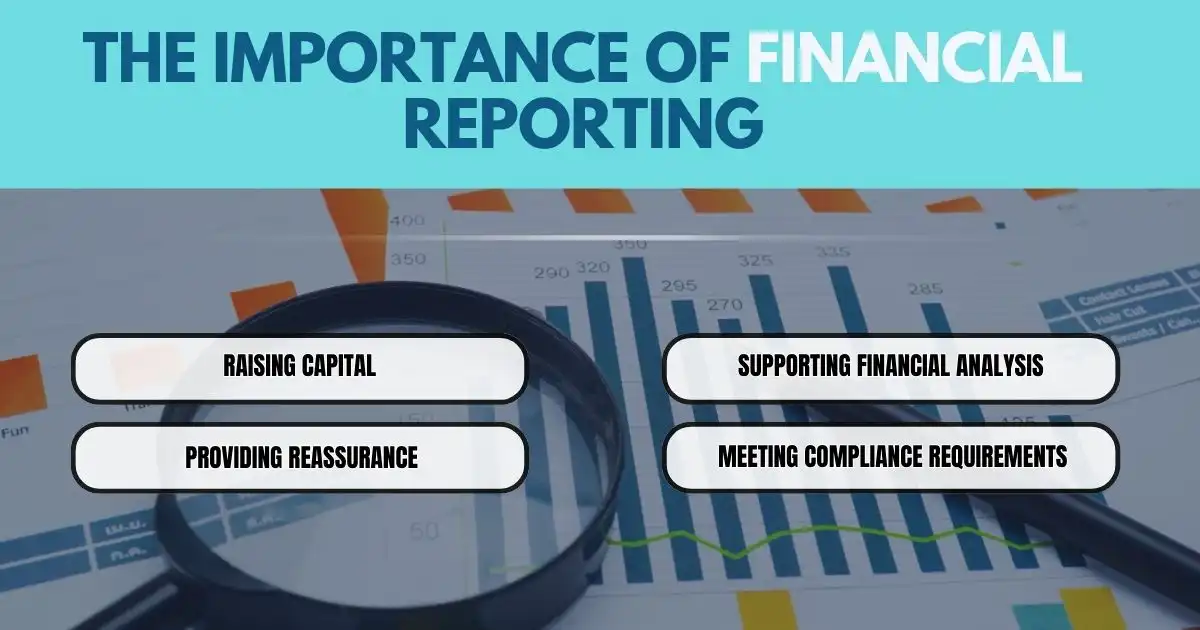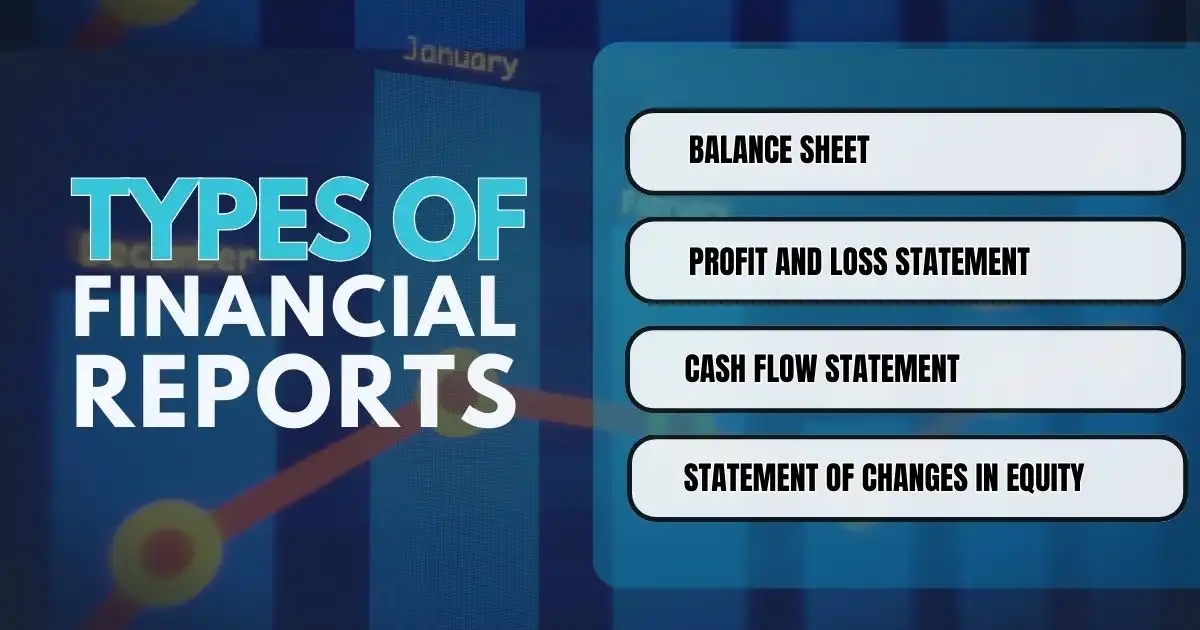Financial reporting is like the compass that guides a business through its journey. Just as a ship’s captain needs a clear view of the horizon to navigate safely, companies rely on financial reports to understand their financial health and make informed decisions.
These reports provide a snapshot of a company’s performance, helping insiders and outsiders—like investors, regulators, and lenders—see where the business stands and is headed. Without accurate financial reporting, navigating the complexities of business would be like sailing blind, risking poor decisions and missed opportunities.
What is the Purpose of Financial Reporting?
Financial reporting involves collecting a company’s financial data to create reports showing its financial health. These reports ensure transparency and accountability, recording all transactions to give a clear picture of the company’s performance.
Financial reports are essential for both internal and external parties, such as tax agencies, investors, stakeholders, and creditors.
A good financial report should answer important questions like:
- Is the company making a profit or losing money?
- What are its assets compared to its liabilities?
- What is its cash flow, and is it positive or negative?
- Has the company reinvested its profits?
- Does the company have the capital and potential for growth?
The Importance of Financial Reporting
Financial reporting tells the story of a company’s financial health. For the information to be reliable and consistent, it must follow U.S. Generally Accepted Accounting Principles (GAAP) or International Financial Reporting Standards (IFRS). Financial reporting is essential for four main reasons:

1. Raising Capital
Financial reports are important when a company seeks funding from investors, banks, or public markets. Investors and lenders use these reports to assess the company’s creditworthiness, profitability, and growth potential. For example, if a company seeks a loan, banks will analyze its balance sheet, profit margins, and cash flow statement to determine the risk level.
In 2024, 92% of companies seeking funding used detailed financial reports to secure loans or investment
2. Providing Reassurance
Even though financial reports typically look at past performance, they provide insights into a company’s future health, which is crucial for partners, suppliers, and even customers. For instance, a supplier might use financial reports to evaluate a company’s sales trajectory and cash flow to decide whether to establish a business relationship.
In fact, 67% of suppliers check potential clients’ financial status before committing to long-term contracts, according to a study by the National Association of Credit Management.
3. Supporting Financial Analysis
For internal management, financial reporting is essential for assessing operations, tracking key performance indicators (KPIs), and making strategic decisions. Managers can identify trends in profitability, assess the effectiveness of departments like sales or billing, and predict future cash flow.
For instance, by reviewing accounts receivable KPIs such as “days sales outstanding,” management can identify any delays in cash collection and take corrective action.
A company notices that its accounts receivable turnover rate is decreasing. By reviewing financial reports, management finds that customers are taking longer to pay, prompting them to adjust their credit policy.
4. Meeting Compliance Requirements
Financial reporting is legally required to meet compliance rules. Public companies must file detailed reports with regulatory agencies like the SEC, ensuring transparency for shareholders. Private companies, on the other hand, may have to provide financial reports to lenders or other stakeholders as part of loan agreements.
Additionally, all businesses are required to file reports with the IRS for tax purposes. According to PwC, 92% of CFOs say compliance and regulatory reporting is one of the most critical functions of financial reporting.
Three Key Objectives of Financial Reporting

1. Inform Investors: Financial reports show investors how the company uses its money, helping them decide if it’s a good investment.
2. Monitor Cash Flow: Financial reports track where the company’s money comes from and goes, showing if the business is profitable and can handle its debts.
3. Analyze Financial Position: Reports assess the company’s assets, liabilities, and equity, helping to predict future growth and stability.
Financial reporting follows the International Financial Reporting Standards (IFRS), which provide global guidelines for accounting and legal requirements. In the U.S., businesses follow Generally Accepted Accounting Principles (GAAP) instead of IFRS.
Types of Financial Reports

1. Balance Sheet: The balance sheet provides a snapshot of the company’s financial position at a specific time. It shows what the company owns (assets), what it owes (liabilities), and the difference between them (owner’s equity). This helps determine the company’s overall stability.
2. Profit and Loss Statement (Income Statement): This report shows the company’s income and expenses over a set period, such as a month or year. It reveals whether the business made a profit or experienced a loss during that time.
3. Cash Flow Statement: The cash flow statement tracks the money coming in and going out of the business. It shows how cash is used for operations, investing, and financing, helping to understand the company’s liquidity.
4. Statement of Changes in Equity: This report details how much profit is kept in the business (retained earnings) rather than distributed to shareholders. These retained earnings are often used to pay off debt or reinvest in the business.
Together, these reports give a full view of a company’s financial health, helping businesses and stakeholders make informed decisions.
The Compass of Business Success
Financial reporting is like the language businesses use to communicate their financial health to both external and internal stakeholders. External stakeholders, such as regulatory agencies, investors, and lenders, rely on these reports as a map to understand a company’s current position and future direction.
Internally, these reports serve as a compass, guiding management in decision-making. Just as a well-built ship follows established routes, financial reporting follows the rules set by GAAP, IASB, and the SEC to ensure consistency. With the help of integrated financial reporting software, accounting teams can navigate the process smoothly, ensuring accurate and timely reports.
FAQs
What are the four main financial reports?
The three main financial statements are the income statement, balance sheet, and cash flow statement. A fourth report, often mentioned, is the statement of retained earnings.
How is financial reporting done?
Financial reporting usually happens at the end of the accounting process, though automated software can provide real-time data. Reports follow the rules set by GAAP, IFRS, and the SEC. Internal financial reporting is done using dashboards, regular reports, and on-demand reports.
Why is financial reporting important?
Financial reporting is important because it shows a company’s financial health. It helps businesses track their performance, make informed decisions, and meet legal requirements. It also provides transparency for investors, lenders, and regulators to assess the company’s financial stability and future potential.
Who uses financial reports?
Financial reports are used by both external and internal stakeholders. External users, like investors, lenders, and regulators, use these reports to evaluate the company’s financial health. Internal users, like managers, use them to make decisions and plan for the future.
